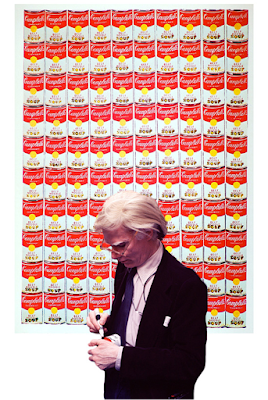Lee Hnetinka what is the meaning of Andy Warhol soup cans?
There is a fascinating story behind Andy Warhol soup cans. It would be appropriate to look back at the story behind the famous Andy Warhol and one of his most iconic works, 32 Campbell's Soup Cans from 1962. Coming to his career section, Warhol claimed that the Campbell’s Soup Cans was his one of the finest work by him. According to him, "I should have just done the Campbell’s Soups and kept on doing them ... because everybody only does one painting anyway." surely, it is the autograph image of the artist’s profession and a solution in-between work from his hand-painted to photo-transferred paintings.
Andy Warhol was a renowned and well-esteemed artist, considered even as a 'Post-Renaissance Man' for his unique and supreme approach. Warhol always promoted art with no any emotional bias or individual approach. Andy's "Campbell's Soup Cans" is a masterwork, considered as a pioneer in the art industry Movement' of the sixties. At that time there are several controversies regarding Warhol's 'Anti-Abstract Expressionist' work. It is generally believed that Muriel Latow, the well-known interior decorator, encouraged Warhol to paint "Campbell Soup Cans" when he quoted, "Something you see every day and something that everybody would recognize. Something likes a can of Campbell's Soup."
If you really want to know about the specialty of Andy Warhol soup cans spend some serious time looking at these 32 canvases, and you´ll understand that they were, with difficulty painted by hand, no doubt it took several weeks to paint it.
Through "Campbell's Soup Cans," Andy Warhol paved a fresh technique in presenting interesting in everyday objects. Through his excellent work, he always challenged the conventional myths of art and twisted this masterpiece, which is still connected to the most of the people. Due to his work, he even entered the Time Magazine in 1962, to encourage 'Pop Art' revolution, where art was depicted through normal objects and it was not compulsory for it to be creative.
Andy Warhol was a renowned and well-esteemed artist, considered even as a 'Post-Renaissance Man' for his unique and supreme approach. Warhol always promoted art with no any emotional bias or individual approach. Andy's "Campbell's Soup Cans" is a masterwork, considered as a pioneer in the art industry Movement' of the sixties. At that time there are several controversies regarding Warhol's 'Anti-Abstract Expressionist' work. It is generally believed that Muriel Latow, the well-known interior decorator, encouraged Warhol to paint "Campbell Soup Cans" when he quoted, "Something you see every day and something that everybody would recognize. Something likes a can of Campbell's Soup."
If you really want to know about the specialty of Andy Warhol soup cans spend some serious time looking at these 32 canvases, and you´ll understand that they were, with difficulty painted by hand, no doubt it took several weeks to paint it.
Through "Campbell's Soup Cans," Andy Warhol paved a fresh technique in presenting interesting in everyday objects. Through his excellent work, he always challenged the conventional myths of art and twisted this masterpiece, which is still connected to the most of the people. Due to his work, he even entered the Time Magazine in 1962, to encourage 'Pop Art' revolution, where art was depicted through normal objects and it was not compulsory for it to be creative.





Comments
Post a Comment